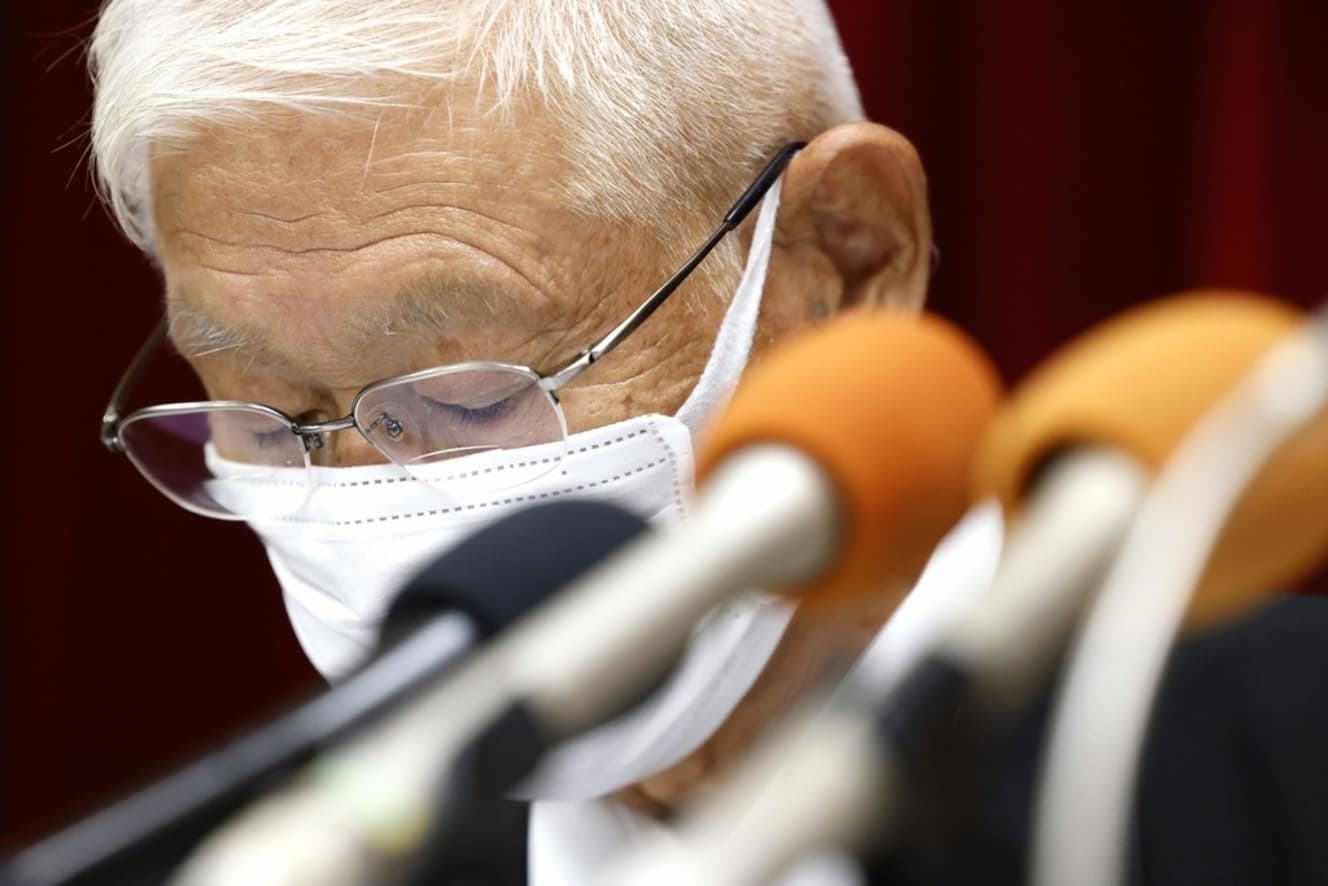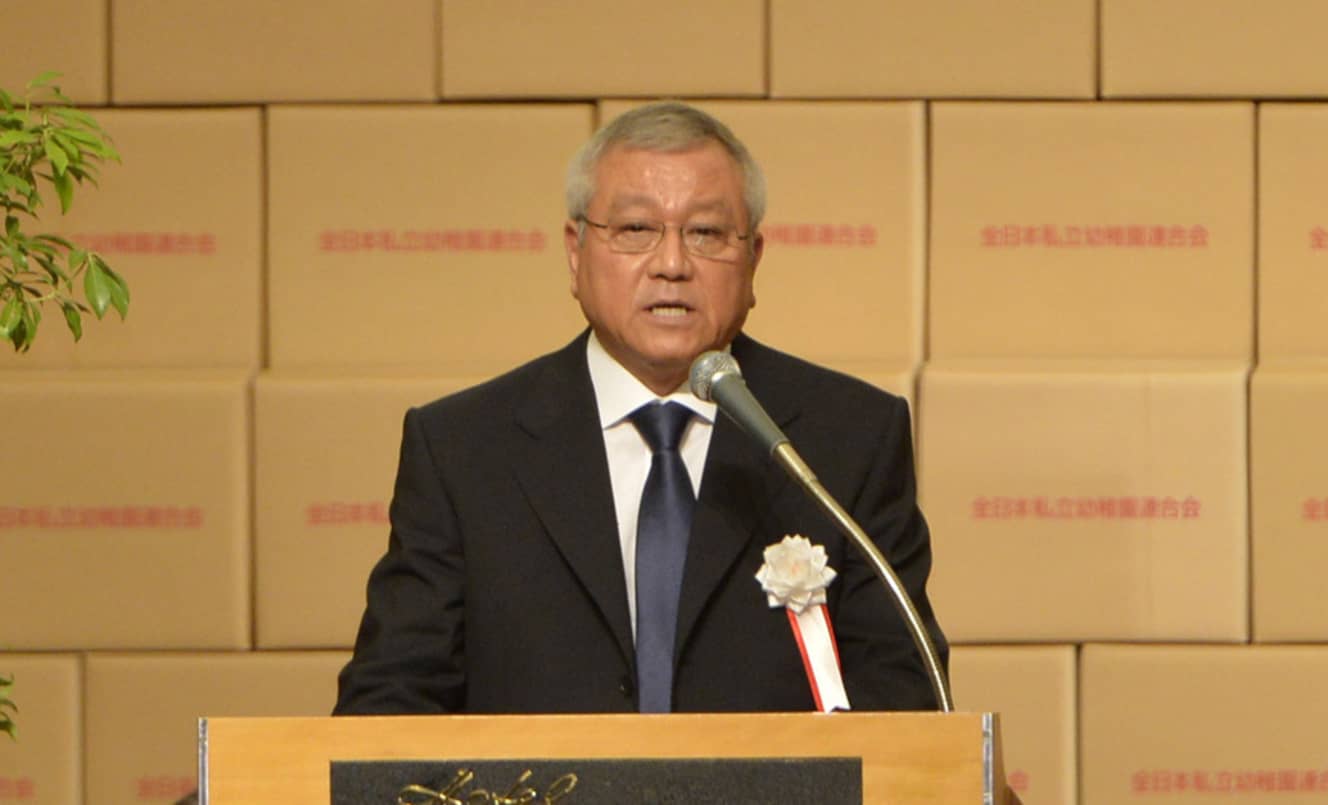Many cases of children being left behind…Reason why “infant belts” have not been introduced
In July, the head of a kindergarten organization, of which about 90% of private kindergartens in Japan are members, was arrested on suspicion of embezzlement and forgery of personal documents.

The child was left in the car for five hours.
The life of a 3-year-old girl was lost on the shuttle bus of Kawasaki Kindergarten (operated by Haibara Gakuen Educational Corporation), an accredited childcare center in Makinohara City, Shizuoka Prefecture. On October 5, one month after the incident, the kindergarten’s board chairman and staff observed a moment of silence around the time the girl was confirmed dead.
The girl had been left in the bus for five hours with the engine turned off without being taken off the bus for the trip to the school, and was found lying in the aisle as the bus was being prepared for the return trip. Normally, the driver of the bus would have asked the girls to get off, but on the day of the incident, the president and director of the school did not do so, and “adult inattention” is believed to have been one of the factors.
A similar fatal accident occurred at a nursery school in Fukuoka Prefecture last July, and the government subsequently issued a warning to kindergartens and nursery schools nationwide. In response to the accident, the government has begun inspections of operation management systems and other systems at the approximately 10,000 kindergartens and certified childcare centers nationwide that provide bus transportation as an emergency measure, and has indicated its intention to require and subsidize the installation of safety equipment to prevent accidents on all buses commuting to and from kindergartens nationwide. There is an impression that the government has finally begun to take serious action regarding the prevention of accidents resulting in deaths of children left unattended.
On the other hand, “infant seat belts” have not yet been put into practical use. Cars that meet the safety standards of the Road Trucking Vehicle Law do not require the installation of seat belts for infants. When infants ride in a car, they are required to wear belts in child seats, and yet there are still many accidents in which children are thrown out of the car by the impact of an accident due to incorrect use of seat belts. Despite this, “infant-only belts” have not been put into practical use in preschool buses.
Safety standards for toddler buses include the legally binding “Safety Standards of the Road Trucking Vehicle Law” and the “Guidelines for Improving Vehicle Safety of Vehicles Exclusively for Toddlers” released by the Ministry of Land, Infrastructure, Transport and Tourism in 2013. While seat belts are exempted from being installed in toddler buses due to the low rate of death and injury caused by the absence of seat belts, the guidelines recommend that instead of seat belts, the backrests of the seats where children sit should be 10 cm higher, and that the backrests should be thicker to minimize damage if a child bumps his/her head or face. In addition, it was recommended that the backrests be thicker and made of softer material so that children’s heads and faces would be less likely to be damaged.
Ministry of Education, Culture, Sports, Science and Technology and kindergarten organizations do not understand the importance of belts.
The Ministry of Land, Infrastructure, Transport and Tourism and the Japan Automobile Manufacturers Association (JAMA) interviewed the All-Japan Federation of Private Kindergartens, of which approximately 90% of private kindergartens nationwide are members, in March 2012. The responses at that time indicate that the Federation has been reluctant to introduce seat belts in infant buses since that time.
We have no particular concerns or dissatisfaction with the current vehicles in terms of safety.
Mandatory seat belts would require more work for staff, and I am worried about emergency egress. There are more disadvantages than advantages.
I don’t want to see the cost increase due to additional equipment.
Furthermore, the association of kindergartens even raised an outcry, saying, “If we consider safety to be an issue (as of 2012), we may choose to abolish the infant carriages themselves and stop providing transportation to and from kindergartens.

Ten years have passed since those hearings were held, but the development of belts suitable for use by toddlers has been completed, yet they have not been put into practical use. When we asked an automobile manufacturer that develops infant buses, they told us, “We have already completed technical verification that the best infant belt suitable for use by infants aged 3 to 6 is the ELR two-point seat belt, and that there are no problems with the infant’s own detachment. We have already completed technical verification that there are no problems with the infant’s own detachment,” he says.
Concerns expressed by the All-Japan Federation of Private Kindergartens.”
So why hasn’t the system been put to practical use? Interviews with the Ministry of Land, Infrastructure, Transport, and Tourism and automakers have once again brought to light the presence of the preschool federation, which is as reluctant as it has been for the past 10 years to equip kindergartens with belts. Without approval from the kindergarten federation, can belts be made mandatory for kindergarten children?
The WFPA has been working with the preschool federation for some time now, but they have been reluctant to make belts mandatory for kindergartners. We believe that it is desirable to have people understand the safety and importance of the belts, and to operate in a win-win situation.
In contrast, Mr. Izuyama, Secretary General of the All-Japan Federation of Private Kindergartens, gave the following response.
The Federation does not have the power to stop the policies that the Ministry of Land, Infrastructure, Transport and Tourism and the automobile organizations are trying to promote. Recently, the Ministry of Land, Infrastructure, Transport and Tourism (MLIT) and the Japan Automobile Manufacturers Association (JAMA) have visited us several times to express their concerns, and we have asked them to improve the technical aspects.
(omitted) We also want to ensure the safety of children on buses. As I indicated earlier, we have been meeting with the Ministry of Land, Infrastructure, Transport and Tourism to discuss their requests, and we have been sincerely responding to them.
The “concerns” mentioned by the Federation are as follows.
(1) In the event of a fire, railroad crossing accident, or other emergency, will it be possible to quickly evacuate the buses, including those used by children under the age of two who commute to the certified kindergartens?
(2) It takes time to put on seat belts, etc., which increases the burden on staff. Also, will the time it takes to fasten seat belts cause traffic congestion and complaints from residents in the neighborhood?
(3) Will it be possible to establish subsidies for each preschool to accompany the “seat belt requirement”?
In particular, does the “subsidies to each preschool” mentioned in (3) mean that the current buses can no longer be used due to the seat belt requirement, and that each preschool will have to replace its buses? It is assumed that the preschool federation believes that it must provide each preschool with the necessary subsidy to replace its buses, and one of the reasons why the “infant seat belt” cannot be put into practical use is the economic situation when it is assumed that support will be provided to all infant buses in the country.
However, Kei Kagawa, former president of the preschool federation and known as the “Don of the kindergarten world,” was arrested in July along with former secretary general Norio Katsukura on suspicion of embezzlement and forgery of personal documents in the course of his duties. Kagawa, who had been “lobbying” politicians three to four times a week through dinners, is said to have been able to use his deep connections to get the law revised to provide free preschool education, while 680 million yen in illegal withdrawals were discovered. However, there are also reports that the two are involved in most of the fraudulent withdrawals.
If there is 600 million yen available, it is not difficult to subsidize part of the cost of purchasing safe buses, and even if belt use becomes mandatory, there is no need to immediately replace the buses…. …….. The safety of children should not be compromised by adult circumstances.




Interview and text by: Kumiko Kato
